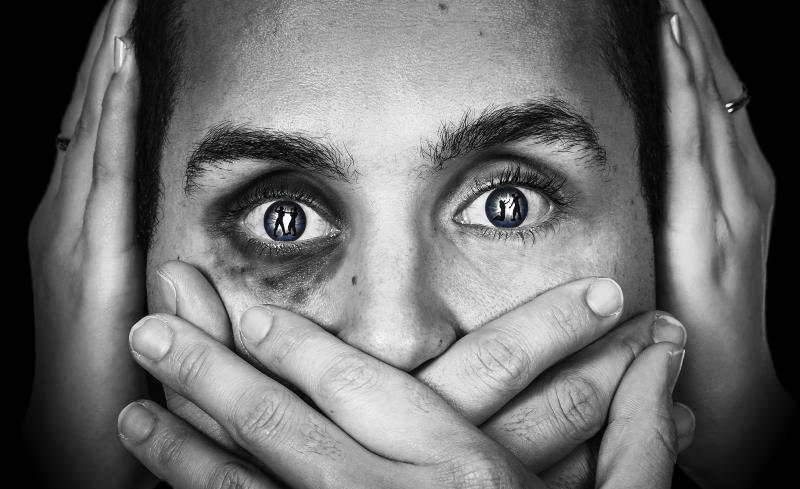Teen violence is that minor scar you constantly ignore, until it succumbs to gangrene and kills you. While murder, rape, and any other form of violence is widely reported, the qualifier ‘teen’ is what we have conveniently overlooked. There are several circumstances that promote delinquent behavior, but the Internet is a very commonly discussed factor. Children (and adults) spend most of their waking hours glued to a screen feeding them arbitrary information. In this discussion, we try to make sense of the extent of influence the Internet exercises, the root of responsibility of this violence, and the battle with censorship.
Suggested read: Domestic violence – are women the only sufferers?
The garb of anonymity

Image source: Pixabay, under Creative Commons License
The greatest gift of the present-day Internet is its loopholes in verification. In an attempt to keep social media age-appropriate, there is age verification, which can be easily duped by a fake email id. My brother can navigate through an iPhone like his life depends on it. He is 2 years old. Surely a teenager knows how to make a false ID? The anonymous quality of the inter-web is a giant tool in the hands of those who want to misuse it.
Stalking, defamation, and cyberbullying

Image source: Getty images
Irrespective of how private our profiles are, the average Internet-user will leave thousands of public digital footprints. For the ones who are smelling for clues, these are easy games. I once had a spurned ‘lover boy’ threaten to follow me around. I had never told him where I lived, but the mere possibility (and I knew it was possible) scared me breathless. This seems to be a “lesser evil” until you realize that over a million women and 40,000 men are stalked in the United States, every year. Half the victims tend to be young.
Defamation and Cyberbullying are criminal offenses in the 21st century, but that has not erased their existence. A forum called ‘Sarahah’ was launched in 2017, where one could send anonymous messages to other people. While the software was developed for a constructive feedback, it gradually became a major tool in the hands of bullies. My Newsfeed was bombarded with hundreds of Public Posts describing the user in a language I wish I could forget.
Generally, among women, a common scare persists, of their profile pictures being misused. This ‘misuse’ can manifest in Photoshop-ing their head onto a naked woman, launching a fake profile by their name, or any non-consensual use of it whatsoever.
In May 2017, a story broke about Vijay Nair, the founder of OML, and his insane stalker. The latter used anonymous mail ids to persistently trouble Nair, which later blew up into a dirty fiasco. The exploitation of the Web in the hands of a demented few, provide reason for anxious precautions.
Online gaming, murder, and ‘copycat suicide’
The primary debate under this section is: Does gaming serve as a relief from stress or the cause of more aggression?
To further the former point, let’s consider Simulations. SIMS are simulated or virtual reality that you can be a character in. You are allowed to play partial God, and control the actions, and even appearance of the SIM. The popularity of the software has shattered limits, garnering over 100 million downloads in its Android version. This magnanimous success only hints at the darker truth of us being unsatisfied with our existence. As the rate of juvenile depression increases, kids are more prone to finding an escape. In that, online gaming is a huge stress-buster. Even war-based games like Counter-Strike help in taking some steam off. You will probably agree with me when I say that blowing off a couple of virtual heads feels like therapy. Even Nene’s calm mother from ‘Shinchan’ would occasionally punch a bunny.
The problem arises when children begin carrying their virtual stints into the real world. The year 2017 saw a lot of violence based on video games. The Blue Whale Game pushed several children, internationally, to their deaths. However, the question remains as to whether a video game is enough impetus for such an act. In December 2017, a 15-year-old boy from Greater Noida murdered his mother and sister with a pair of scissors and a pizza-cutter, among others. Initially, the blame was pinned on his addiction to a game called ‘High School Gangster’. The game in question was set on the premise of killing people and escaping. As the case progressed, it was discovered that the child often felt unloved in comparison to his sister, was constantly thrashed for being poor in studies, and lived in an environment not conducive to a healthy upbringing.
Suggested read: Does Media Play A Role In Perpetuating Violence Against Women? Let’s Find out
Heightening depression rates
If I began to cite all the studies that have asserted the Internet’s role in Depression, this article would be 1500 words worth of links. Considering the giant corpus of work that has gone into both sides of the debate, the discussion surrounding the Internet’s role is credible.
In June 2014, several news outlets hosted the story of 2 Wisconsin pre-teens who stabbed their friend in the woods. They confessed that the Internet meme ‘Slenderman’ influenced their course of action. That in itself seems like a dangerous condition. However, reflecting on the subject of memes, there are reasons why Millennials are thriving on them. It is a form of stress-relief, an avenue to cover the imminent apocalypse with teenage humor. Here are generations of children holding onto their only defense mechanism.
Many researches also speak about the violent content being hosted online: that of dead bodies, slit wrists, and some even list pornography under this category. These findings are, of course, true. However, what bothers me is that none of these are un-real, or solely a product of the Internet. To shield a child from devastation would be to prevent them from watching News. Bringing children up on fairytales is no longer a viable option in the 21st century.
In this context, there have been debates on the need and extent of censorship to protect the sensitivities of children. The troublesome part of this is that the opinion or the personalities of these kids are never really taken into account. The parents are the only ones in control. Imagine your friend censoring a movie based on what they think you should watch. I have watched several dead bodies, and yet here I am, alive and kicking. I have also shielded myself from triggers by avoiding certain videos, or documentaries. Choices or sensitivities differ. The prospect of censoring does not sit easy with me, but it is true that teenagers are perhaps too naive to fend for themselves.
Sexual violence

Image source: Google, copyright-free image under Creative Commons License
Child Abuse Review, 2009, Michael Flood: “especially among boys and young men who are frequent consumers of pornography…violent material…attitudes of sexual coercion…perpetrating assault.”
Aggression and Violence Behavior, 2009, Ferguson and Hartley: “It is time to discard the hypothesis that pornography contributes to increased sexual assault behavior.”
The opinions on this subject, as reflected in the 2009 reports, are conflicting as in all else. The problem with pornography in India, more than its content, is its sole responsibility in sex education. India lacks the infrastructure to educate youngsters about their own bodies. The Censor Board’s lifelong tussle with nudity and “adult” sequences has left several generations of hormonal teenagers extremely dissatisfied. The absence of easy-exposure to porn, a moral-policing on brothels, and an insuppressible libido (coupled with a complete disregard for consent) have led to the committing of several crimes. Porn as a source of primary sex-ed is hugely flawed.
Researches assert the influence of pornography on domestic violence. There exists a rather popular genre of ‘rape porn’. It took me a significant period of time before I learned that it was staged. Only then did my horror and disgust slightly abbey themselves. To many people without my exposure and zone of influence, this knowledge may come too late. Since they do not know of prior contracts, fluffers, or the existence of a scripted storyline, some forms of porn, to them, may normalize aggressive behavior, disregard for consent, and physical violence.
Poverty and environment as a greater influencer
Sociological research primarily roots juvenile delinquent behavior in poverty. A study by Mike Males from the Center on Juvenile and Criminal Justice, San Francisco, asserts that teenage poverty, and not teenage ‘culture’, is the root cause of juvenile delinquency. As per the Central Crime Station of India,
“Most of the crime is committed by juveniles from the BPL (Below Poverty Line) segment or lower middle class. It may be due to the environment or social factor. Parental care is grossly missing in this segment as both parents are daily wage earners.”
A feeling of inadequacy, peer pressure, and deprivation from common social amenities, has often driven children to violent behavior. When reflecting upon this factor, the role of the Internet seems rather elitist and inferior.
Talk of a child’s environment pricks the debate upon the power of upbringing. As in the Greater Noida case, priorly discussed in the article, there are often several more poisonous factors at play, far surpassing the extent or reach of a video game or meme. The crux of teen violence lies in these unmonitored experiences that a child is part of, ones that nobody deems worthy of observing. Is your child being bullied at school? Is your sibling being scolded too much? Is your friend venturing into abusive relationships? How is your classmate dealing with their financial difficulty? There are several social factors that contribute to the making of a criminal, and delinquent behavior does not exist in isolation.
Suggested read: Is The Internet Getting Too LOUD?
The role of the Internet in teen violence is far inferior in contrast to social causes. But it cannot be discredited either. It hosts a plethora of triggers, insensitive material, and dangerous influences. Just like the rest of the world. The prospect of censorship irks me, because I do not know a single organization I could trust with unbiased good-for-all measures. The need for the Internet is perhaps greater than the causes for its censoring. So, where do we draw the line?
Featured image source: Pixabay, under Creative Commons License













